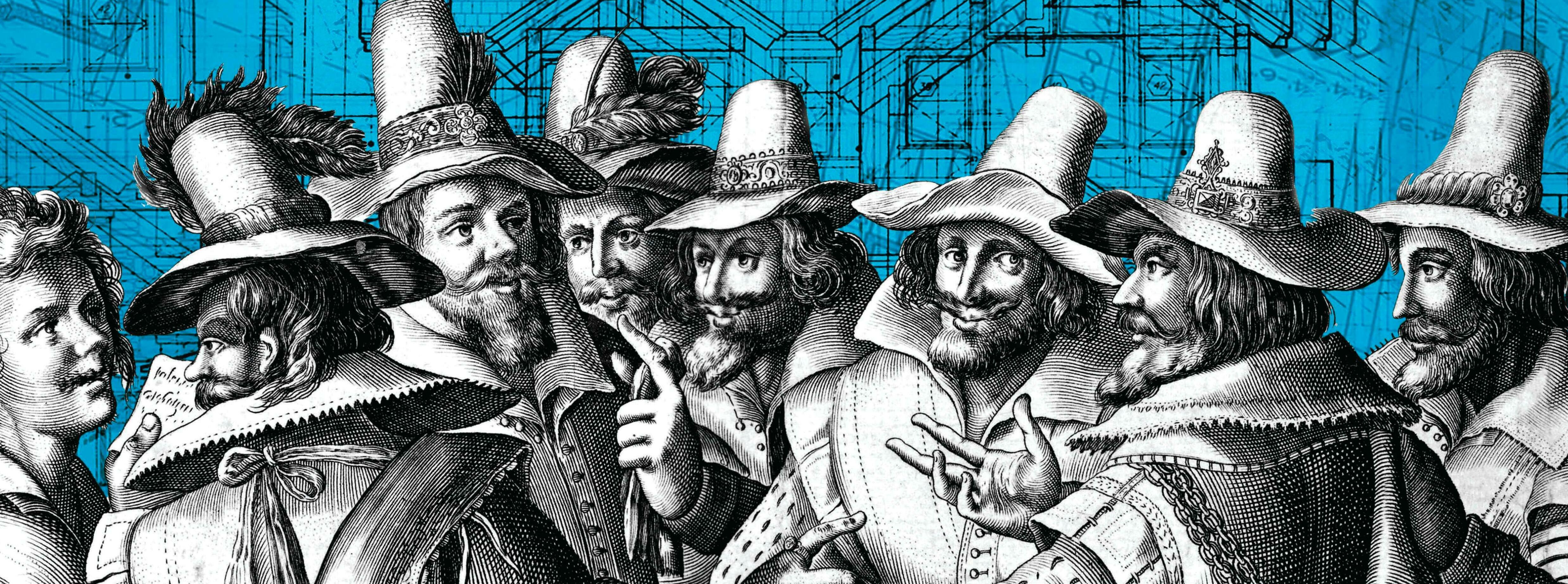
Towards the end of 1605, a man was being interrogated in a smallish building deep within the fortress of the Tower of London. It was here, in the most secure place in Britain, that the state dealt with its enemies. This particular enemy of the state was named Guy Fawkes.
The records of that interrogation are today among the treasures of the National Archives, and going there to film them for the new series of Lucy Worsley Investigates was an unbelievable thrill. It’s evident that a secretary recorded Fawkes’s words, and that the conspirator was asked to sign his name to verify that the record was accurate. On one page, his signature is clear and confident: Guido Fawkes. Two days later, though, his name is no more than the faintest of scrawls.
Historians generally agree that this difference is because, in the time between scribbling the two signatures, he’d been tortured and had lost the use of his hands. A few weeks later, he would also lose his life.
Tale of violence
It’s quite extraordinary to think that, 400 years later, this tale of violence has morphed into an annual occasion for family-friendly fun. The reason for lighting bonfires and fireworks on the fifth of November is now largely forgotten. Technically, we’re celebrating the foiling of a plot against King James VI & I, planned by Catholic extremists whom many would call terrorists.
If you step off a London Underground train at Charing Cross – perhaps on your way to visit the National Gallery – you can admire an enormous tiled image of the gunpowder plotters that takes up the whole height of the platform wall. Seen by thousands of commuters, tourists and schoolkids on a London day out, the image of the conspirators – with their tall hats, flowing locks and furtive body language – makes them look like a rather stylish rock band.
Esta historia es de la edición January 2025 de BBC History UK.
Comience su prueba gratuita de Magzter GOLD de 7 días para acceder a miles de historias premium seleccionadas y a más de 9,000 revistas y periódicos.
Ya eres suscriptor ? Conectar
Esta historia es de la edición January 2025 de BBC History UK.
Comience su prueba gratuita de Magzter GOLD de 7 días para acceder a miles de historias premium seleccionadas y a más de 9,000 revistas y periódicos.
Ya eres suscriptor? Conectar

Viking mussels
ELEANOR BARNETT digs into archaeological research to recreate a Viking-cum-AngloSaxon seafood dish from medieval York

Fingers, frog's and fairies
Fortune telling was all the rage in the 16th and 17th centuries, and practitioners would stop at nothing to tap in to the supernatural. Martha McGill tells a story of Highland seers, tarot cards and encounters with the spirit world

Nothing matches being with Alexander the Great on foot in the Hindu Kush
AT OUR LITTLE FILM COMPANY, MAYA VISION, we recently took the decision to digitise all of the rushes of our key films so that we could dispose of hundreds of boxes of tapes that had been kept in storage, throwing out stuff we thought we would never need again.

Library of the dead
Highgate Cemetery, created as a fashionable resting place for wealthy Victorian dead, is a veritable who's who of London's great and good. PETER ROSS roams the avenues of this most atmospheric necropolis

Slavery, exploitation and racism. These tragedies have long dominated histories of Africa. But there's another way to tell this story. And it's one that puts Africans right at the centre of their continent's extraordinarily rich and vibrant past
An 1414, in the Chinese city of Nanjing, a giraffe caused a stir. Amid a crowd of shocked, noble spectators, an official, leading the creature via a rope tied round its face, presented it to China's Yongle emperor. His officials said it was a qilin - an auspicious unicorn - which his sage governance had made appear.

England's forgotten hero
When the Hundred Years' War was reaching a climax, one man was fighting tenaciously to secure the English claim to the French crown. So why, asks Joanna Arman, is Henry V's formidable brother, John, Duke of Bedford, not better known?

HENRY III AND THE MAGNA CARTA THAT MATTERED
King John's sealing of a charter at Runnymede in 1215 is one of the most feted moments of the Middle Ages. Yet, writes David Carpenter, it was the charter issued by his son 10 years later that became fundamental to England's history

Gutenberg publishes a pioneering new book
‘The printing press triggers an information revolution

How empire ruptured rural Britain
We know that enslaved Africans and their descendants suffered in the distant colonies of empire. But, as Corinne Fowler explains, the colonial system also had dire impacts on people in the countryside of the 'motherland'

"I FELT VERY ALONE IN A WORLD GONE HORRIBLY MAD"
It was a moment of possibilities, dislocation and dread. Dan Todman tells the story of the 1.5 million urban Britons evacuated to the countryside at the start of the Second World War